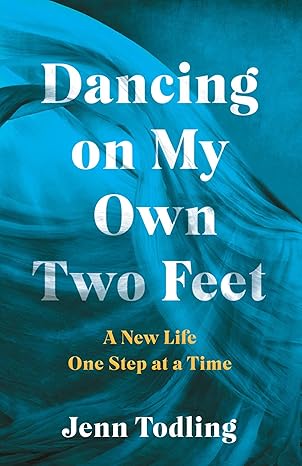Valentine by George Sand: A Review
 It was not until the fall of 2015 when I had my first encounter with the great figure of Amantine Lucile Aurore Dupin, better known as George Sand, only thanks to my obsession with Chopin and with classical music. The curse of entrapment in a man’s name seemed to have found new ways to haunt her until then (and beyond). Had it not been for picking up a copy of Impromptu, a 1991 British-American film that highlighted the dreamy, fragile musician’s love affair with the powerful woman novelist, I might have never gotten the chance to experience the genius of her work or relish in the details of her vibrant being – her multiple love affairs, her unlawful s’habiller en homme (donning men’s clothing) and smoking in public, to name a few.
It was not until the fall of 2015 when I had my first encounter with the great figure of Amantine Lucile Aurore Dupin, better known as George Sand, only thanks to my obsession with Chopin and with classical music. The curse of entrapment in a man’s name seemed to have found new ways to haunt her until then (and beyond). Had it not been for picking up a copy of Impromptu, a 1991 British-American film that highlighted the dreamy, fragile musician’s love affair with the powerful woman novelist, I might have never gotten the chance to experience the genius of her work or relish in the details of her vibrant being – her multiple love affairs, her unlawful s’habiller en homme (donning men’s clothing) and smoking in public, to name a few.
Enchanted by the personage on the screen – played brilliantly by Judy Davis – I was ready for a glimpse into the talent and the literary heritage of the revered novelist. My first pick was Valentine, George Sand’s second novel, which I found overflowing with knowledge of humans’ amiable weaknesses, framed ever so boldly yet with eloquence and style, and displayed in vivid portraits with enviable power and spirit. Upon turning the last page, I was left with a lingering question: Could love be apolitical?
This might seem like an odd query, as the word “political” does not necessarily conjure up images of lovers sharing a blissful moment away from prying eyes. Yet the query is reminiscent of the age-old question: could art be apolitical? Many have answered the latter with a resounding “no,” saying that a claim of an apolitical standpoint in creating one’s art is in and of itself a political statement.
When it comes to the art of love, the role of politics might be a bit more subtle and implicit, and yet more influential than meets the eye. After all, a lover’s prospects of acting autonomously, initiating contact with the beloved, engaging in/avoiding sexual intercourse, prioritizing/trivializing marriage, are all dictated by a political system that also prescribes their social and economic roles.
Choosing to comply with or rebel against said system can very well be regarded as a political stance, consciously or subconsciously, in fictional worlds as well as in the real world. If such were not the case, Shakespeare would have had no reason to kill his darlings, Romeo and Juliet, nor would George Sand have destined her young lovers, Valentine and Benedict, to the coldness of the tomb.
Valentine draws heavily on the premise. The inescapability of love politics begins to unfold as we step into the world of Valentine de Raimbault, a high-born young beauty betrothed to Comte de Lansac. She makes her debut appearance when introduced to the character of Benedict Lhery, the young nephew and future son-in-law of a farmer living in a farmhouse on the Raimbault estate.
Early on, the story reveals the extent of disparity between the two ill-matched lovers as signified by their abodes: the château and the farm. Furthermore, their extramarital affair takes place in the backdrop of the Bourbon Restoration, an era that reintroduced the prohibition of divorce, a time when the Legitimists exacerbated the tensions among the nobility, the peasantry, and the emerging bourgeoisie.
Sand does not shy away from voicing her criticism of the institutions of her time, particularly the institution of marriage. In one of Benedict’s monologues, shortly after Valentine’s wedding, when he is hit by the inevitable, he exclaims inwardly, “shocking tyranny of man over woman! Marriage, society, all existing institutions, I hate you!”
Shortly after, he elaborates on his manifesto, in a most eloquent fashion. “Everyday,” Benedict thinks to himself, “in the name of God and of society, some clown or some dastard obtains the hand of an unfortunate girl, who is forced by her parents, her good name or her poverty to stifle in her heart a pure and sanctified love.”
Most admirable is Sand’s avant-garde feminism, when she describes a coerced consummation of marriage for what feminists wish it to be known as universally. Through the novel’s omniscient narrator, we read a description of Benedict’s state of mind, in his desperation to prevent a loathsome crime. “There was a way of punishing that heartless mother,” says the narrator, “who in cold blood condemned her daughter to legitimate degradation, to the vilest degradation inflicted on woman—to rape.” Today, many places around the world, including in the developed world, still find the concept of spousal rape disputable.
The story ends tragically with the death of the star-crossed lovers, and with a twist of fate that underscores the inevitability of the social and political changes underway. One might think that Valentine and Benedict might have found more happiness in the social mobility of modern time. Parallel to the oppressive forces of the Restoration period was the Saint-Simonian discourse on the emancipation of women, a movement that was taking hold in Paris. Sand might have benefited from the movement; the movement might have drawn from her work; but the truth remains, as one ancient Greek philosopher supposedly said, that change is the only constant in life.
—
Ibtihal Rida Mahmood is a Jordanian American freelance writer and translator. Her work has been published in The Seattle Globalist, arablit.org, and The Markaz Review, and she is the translator of several books including Snow in Amman and The Impossible Revolution.
Category: On Writing




























